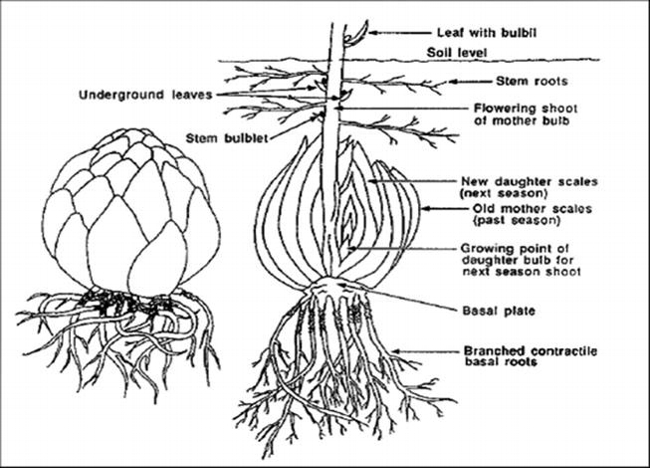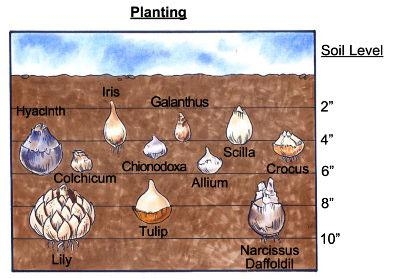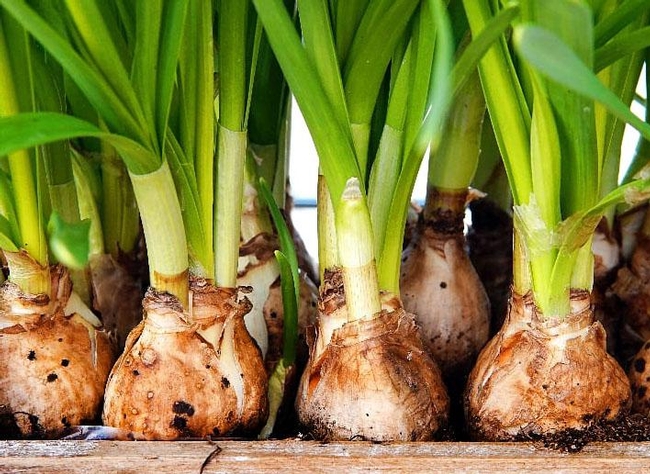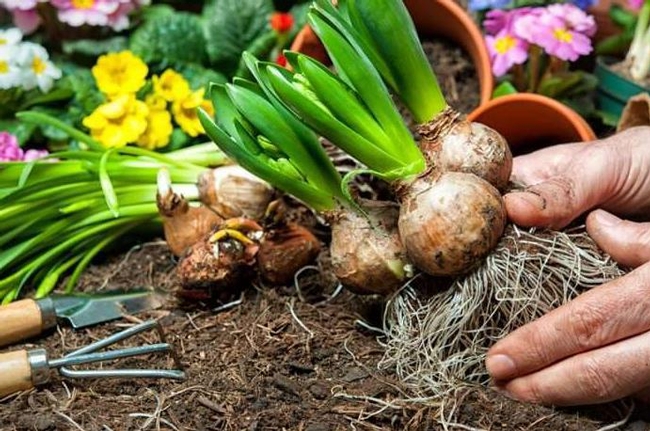Many bulb crops are of Old World origin, introduced into horticulture long ago and subjected to selection and crossing through the years to yield modern cultivars.
In Horticulture, the term bulb is inaccurately applied to several botanical structures with a similar food storing function.
Bulbs can be grown in various ways; formal gardens, scattered in lawns under trees, or strategically planted throughout beds and borders. Countless bulbs will naturalize in an area and multiply, coming back for many years. Bulbs enable many common garden ornamentals to produce their flowers in early spring—other bulb-producing plants flower in the summer months. Therefore, careful planting and planning can provide many years of enjoyment from one planting session.

A bulb is comprised of a relatively large, usually sphere shape, underground bud with membranous or abundant overlying leaves starting from a short stem. A bulb's plump leaves, which are extended leaf bases in some species, function as food storage that enable a plant to lie inactive when water is scarce. However, when the environmental condition became advantageous, the bulbs resume their active growth once again. Moreover, some bulbs species are economically important to humans because of their fleshy leaves' taste and nutritional values, like onions, garlic, shallots, and leeks.
How to plant bulbs
Spring bulbs, also known as hardy bulbs, need several weeks of cold temperatures to break their dormancy and flower
Summer bulbs, also known as tender bulbs, are planted early to mid-spring and flower or leaf out in summer. These bulbs are not tolerant of cold temperatures and must only be planted after the ground warms up and there's no longer a threat of frost. The average planting times for summer bulbs in zones 8 to 10 is from late March to May.
They also can be stored in a cold, dry spot until planting is feasible.
Drainage and sunlight are of the utmost importance because root rotting can occur in wet soils. Loamy or slightly sandy soil is the most advantageous; they provide drainage and nutrients for bulbs to thrive. Also, adding a mix of organic materials can improve the nutrients and improve drainage if needed.

Place bulbs with the pointed end up and roots down. If not sure about the correct placement, plant the bulb at an angle or side and it will find its way to the surface. Cover with mulch to prevent weeds and water well to help them get established. If needed, cover bulbs with chicken wire or a mesh. Also, planting in bulb baskets or wire cages helps protect the bulbs from hungry critters.
Aftercare and Digging up bulbs, for all bulbs, after blooming, cut only the flower stem leaving the leaves untouched until they turn yellow or dieback. They are collecting and store energy. If the foliage is snipped too soon, bulbs may not perform well the following year.
Your labor will be rewarded with a beautiful garden full of life!